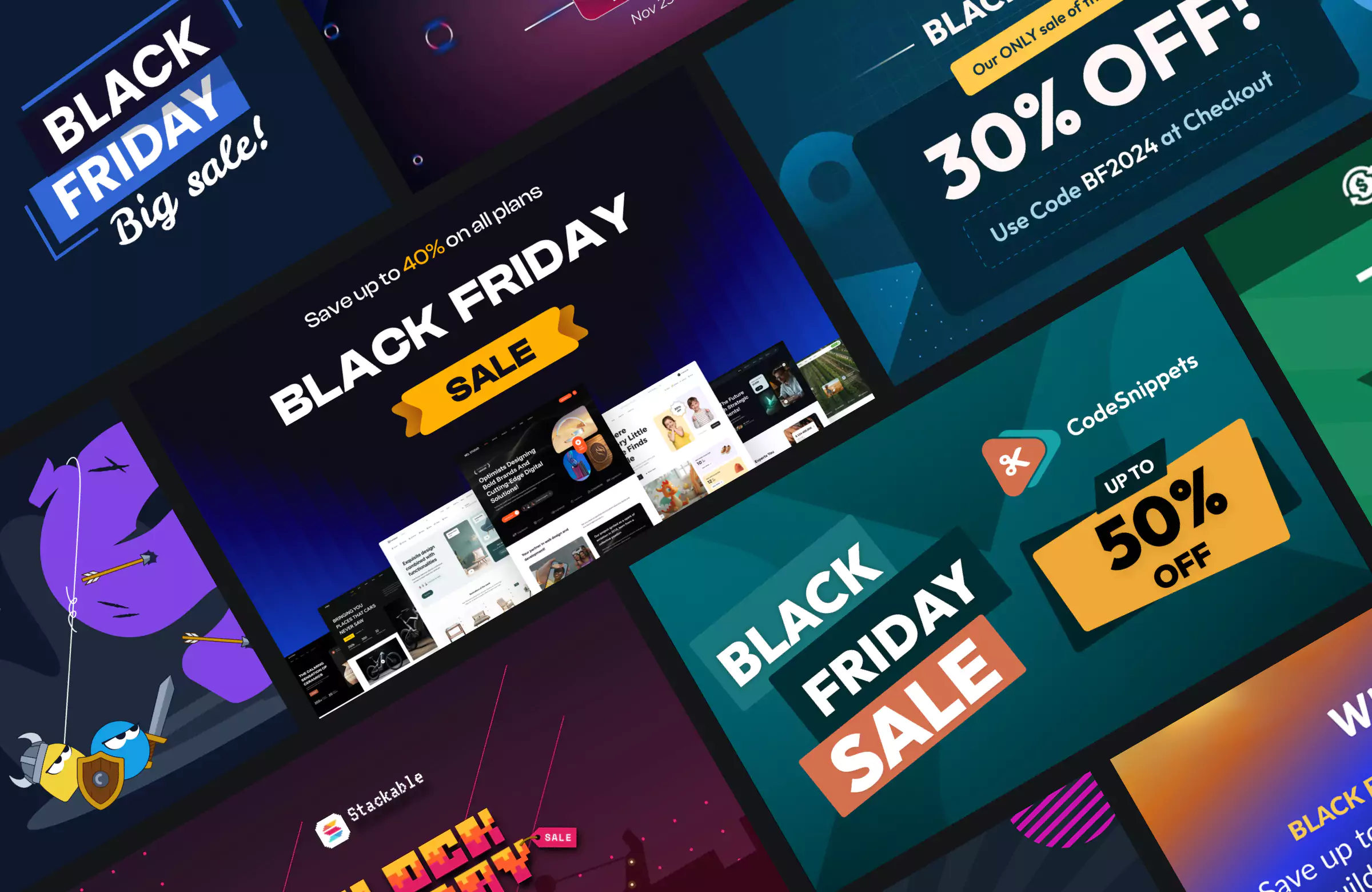Online marketplaces have become the core of modern eCommerce. Instead of visiting individual stores, most shoppers now turn to platforms like Amazon and eBay that bring thousands of sellers together. These platforms make buying faster, safer, and more convenient than ever.
For businesses, marketplaces offer quick access to large audiences and ready-made infrastructure that simplifies selling and fulfilment. They remove many barriers to entry but also come with trade-offs such as platform fees, high competition, and limited control over branding.
Understanding how marketplaces work and how to use them strategically can help you reach new customers while protecting profit margins.
This guide explains what eCommerce marketplaces are, their main benefits and challenges, and how to choose the right platforms to grow your online business.
What is an eCommerce Marketplace?
An eCommerce marketplace is an online platform where multiple third-party sellers list and sell products to customers.
Platforms like Amazon, eBay, and Walmart act as intermediaries between sellers and shoppers. They handle payments, order tracking, and dispute resolution while sellers manage product listings, pricing, and inventory. This setup makes it easier for businesses of all sizes to start selling quickly without technical complexity.
And unlike a traditional online store that sells products from one business, a marketplace brings together many sellers under one roof. This gives customers more options, competitive prices, and trusted buying experiences backed by reviews and return policies.
Marketplaces can be global or regional, broad or niche, depending on the target audience and product type. Together, they form one of the most powerful engines driving eCommerce growth today.
Top Global eCommerce Marketplaces
The following marketplaces dominate global eCommerce and offer sellers powerful tools to scale across different regions and product categories.
Amazon
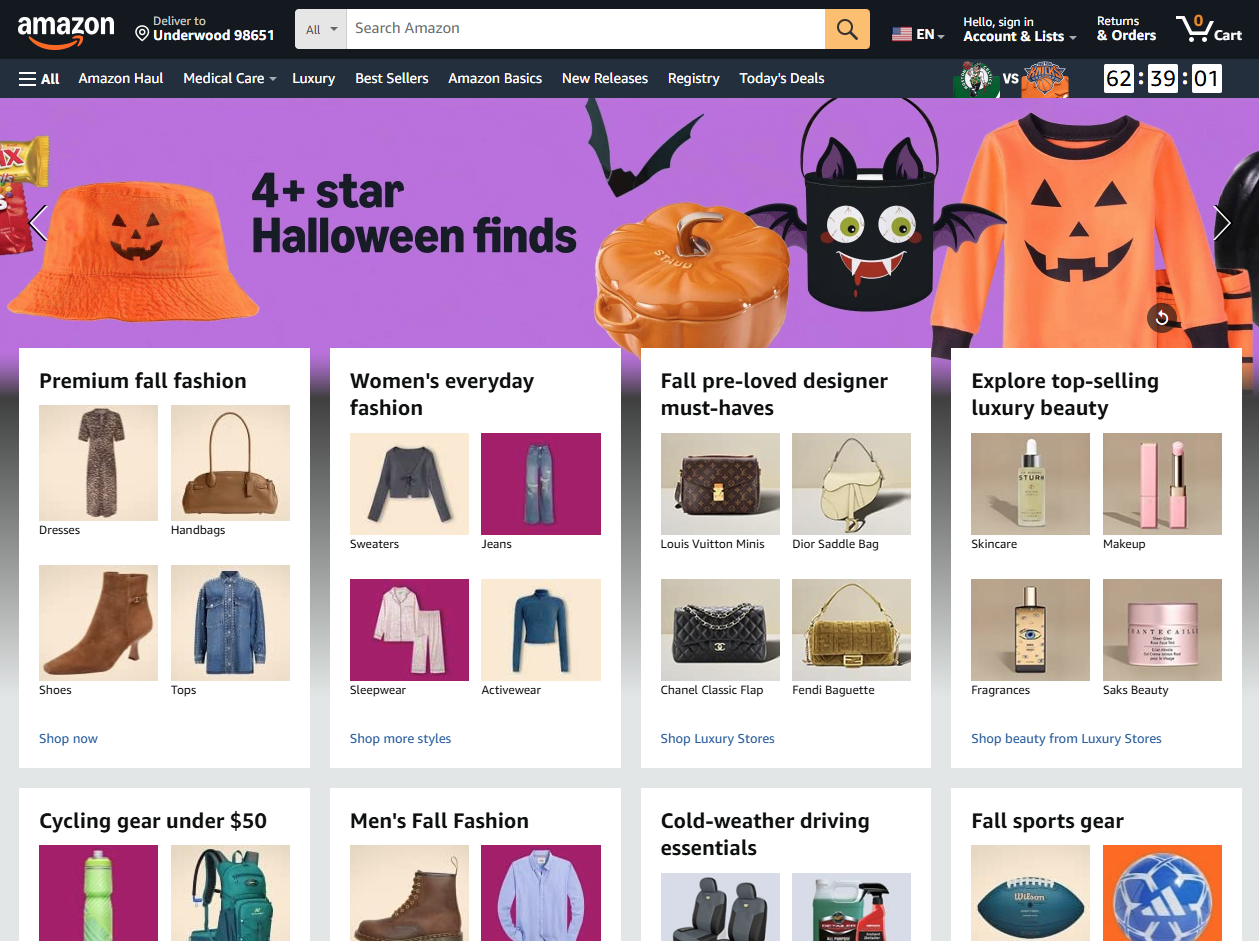
Amazon is the world’s largest eCommerce marketplace, connecting millions of buyers and independent sellers every day. Through Seller Central, merchants can list products, manage orders, and use tools like Amazon Ads, Brand Registry, and Product Opportunity Explorer to grow their business. The Fulfilment by Amazon (FBA) program handles storage, packing, shipping, customer service, and returns, helping sellers offer fast, Prime-eligible delivery.
Amazon offers two selling plans: the Individual plan at $0.99 per sale and the Professional plan at $39.99 per month. Sellers also pay referral fees by category and FBA fulfilment costs, which can be estimated using the Revenue Calculator.
eBay
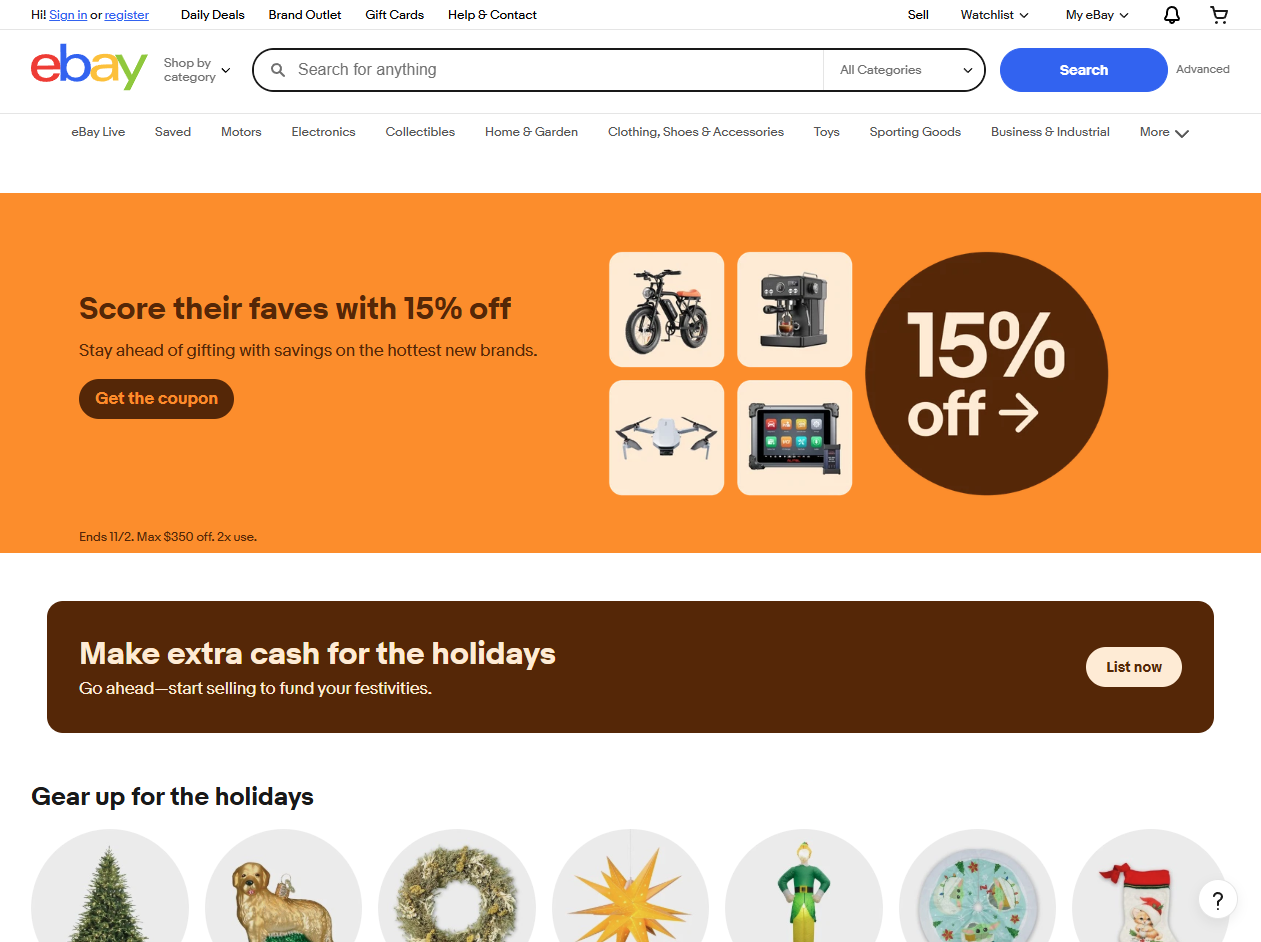
eBay is one of the world’s most established online marketplaces, connecting millions of buyers and sellers across diverse product categories. Sellers can list items through auction or Buy It Now formats, use AI-powered pricing tools, and access discounted eBay shipping labels. The platform also provides built-in protections, secure payments, and marketing tools like Promoted Listings to boost visibility.
Selling on eBay involves two main fees: an insertion fee after 250 free listings per month and a final value fee (typically 10–15% of the sale price). Optional listing upgrades, advertising, and shipping services may add extra costs.
Walmart Marketplace
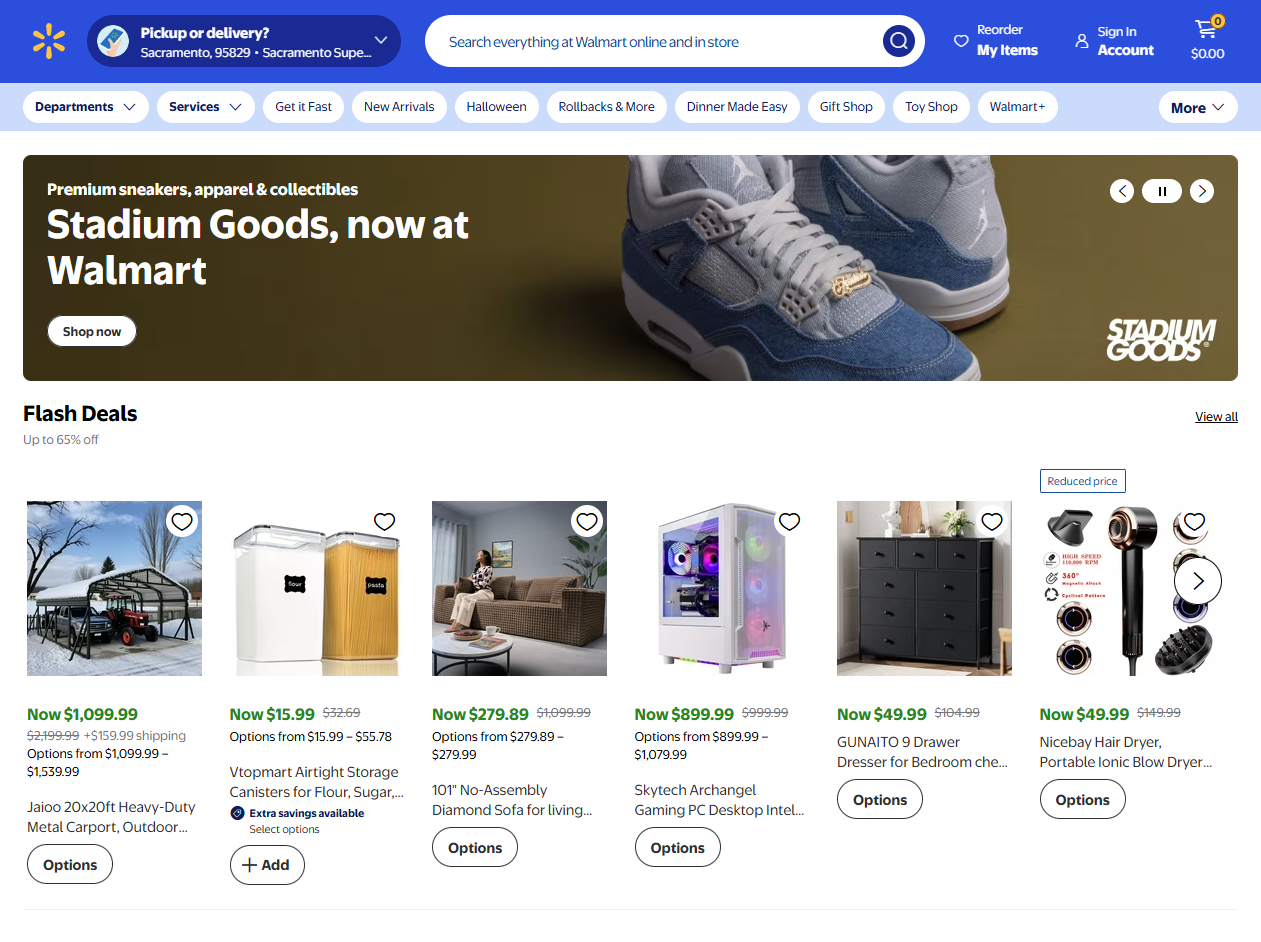
Walmart Marketplace allows independent sellers to reach millions of Walmart.com shoppers across the United States. The platform offers trusted brand visibility, access to Walmart’s fulfillment network, and seamless integration with tools for inventory, pricing, and advertising. Sellers can manage listings through the Seller Center or third-party integrations like WooCommerce or Shopify.
Walmart charges no setup or monthly fees, only a referral fee per sale, which typically ranges between 6% and 15% depending on category. Sellers can also use Walmart Fulfilment Services (WFS) for storage, packing, and delivery, helping them offer fast, reliable shipping similar to Amazon’s Prime experience.
AliExpress
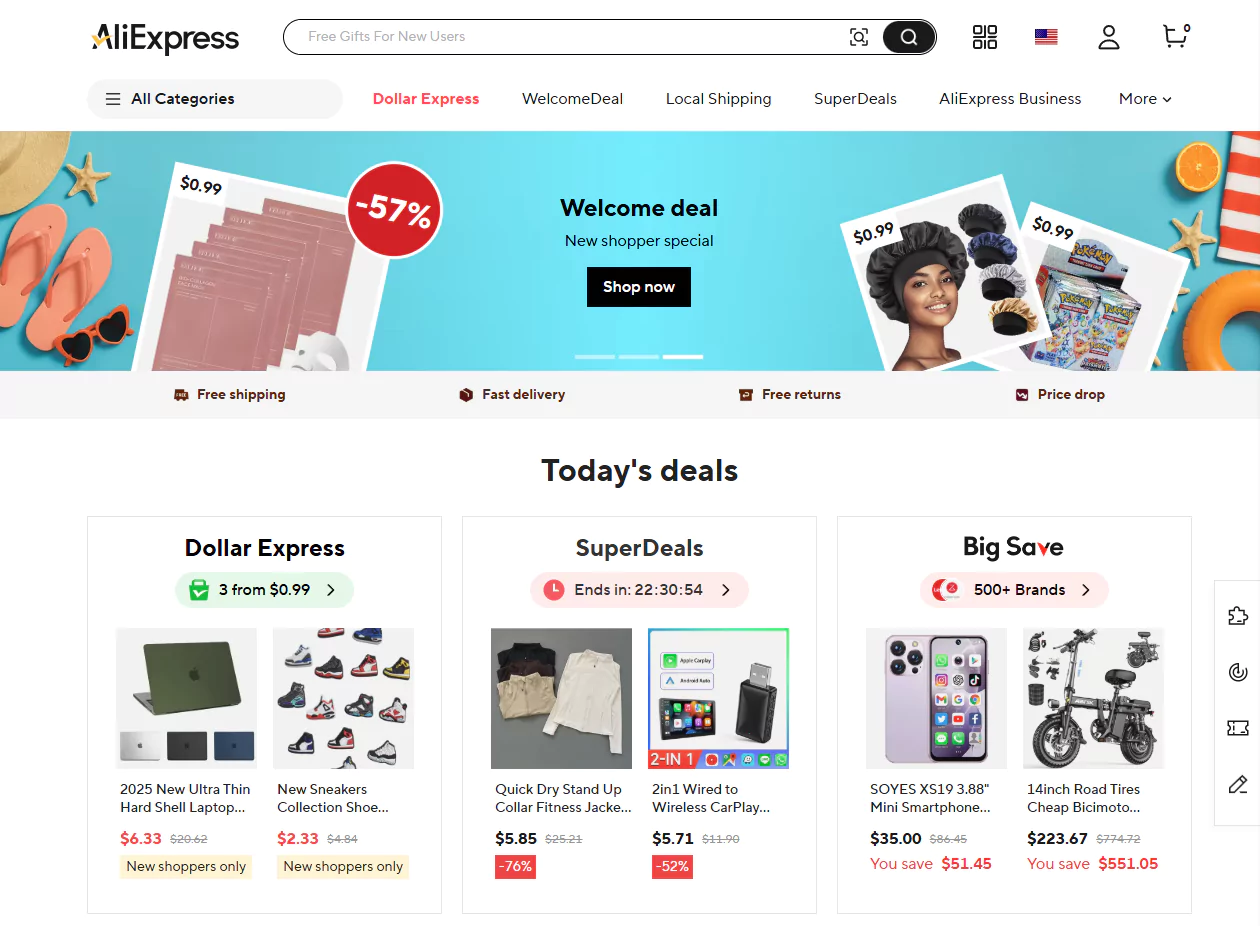
AliExpress, part of the Alibaba Group, is a global marketplace connecting small and medium-sized businesses with buyers in over 200 countries. With more than 150 million active shoppers, it’s ideal for merchants looking to expand internationally. Sellers can quickly register, list products, and fulfill orders using AliExpress’s cross-border logistics solutions. The platform supports 16 languages and provides built-in tools for marketing, analytics, and customer service.
AliExpress typically charges commission fees on sales, varying by category and region, along with logistics and shipping costs. Despite these fees, its global reach and ease of entry make it one of the most accessible marketplaces for international sellers.
Shopee
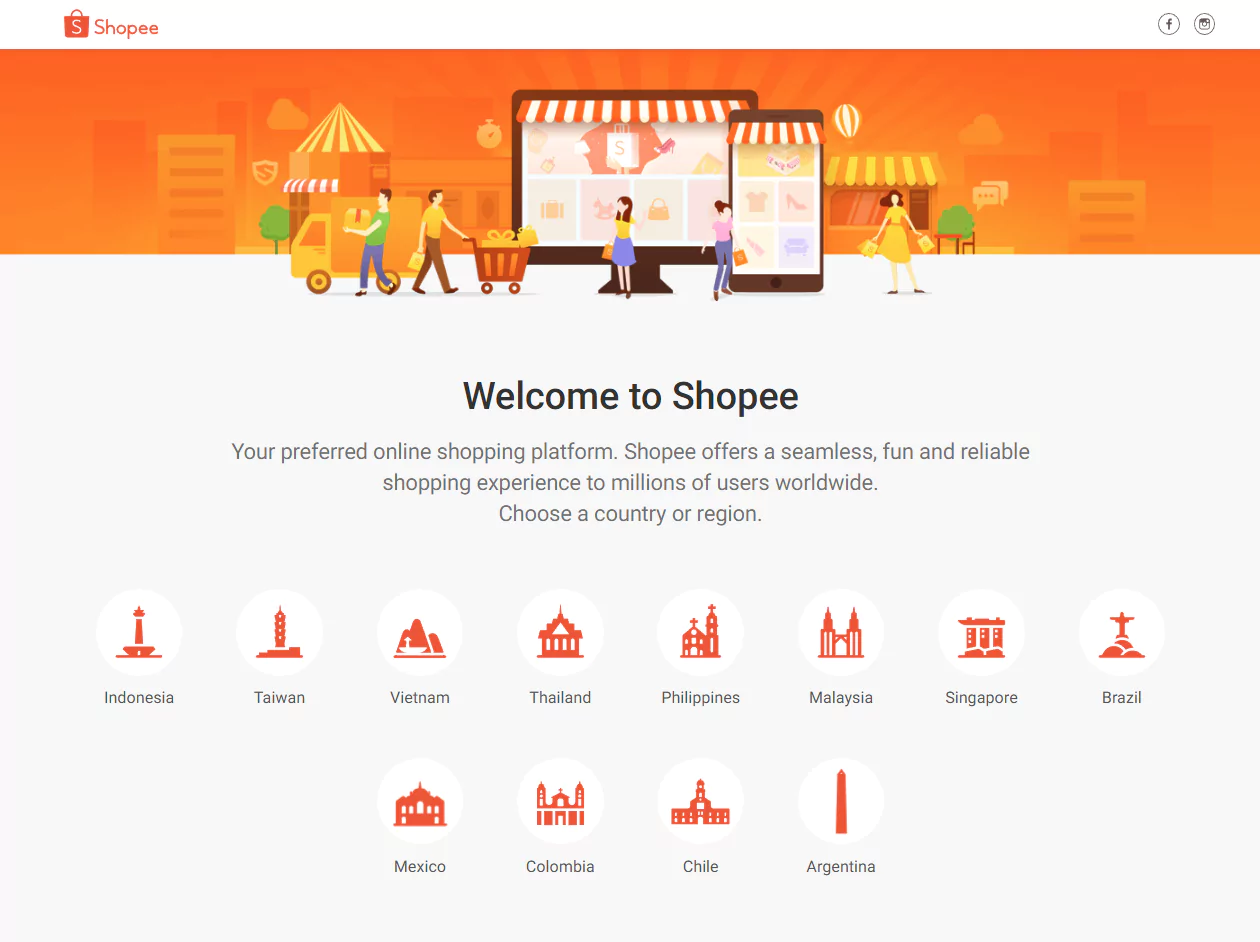
Shopee is one of Southeast Asia’s leading eCommerce platforms, known for its mobile-first approach and strong regional presence in markets like Singapore, Malaysia, Indonesia, and the Philippines. The platform offers powerful tools for product listings, inventory management, advertising, and performance tracking, along with technical support and open APIs for automation.
Sellers on Shopee pay commission fees that vary by category and region, generally between 2% and 8%, plus applicable taxes. New marketplace sellers often enjoy a 120-day commission waiver or until they reach 100 completed orders. Shopee’s low entry barriers and regional popularity make it ideal for growing brands targeting emerging markets.
Mercado Libre
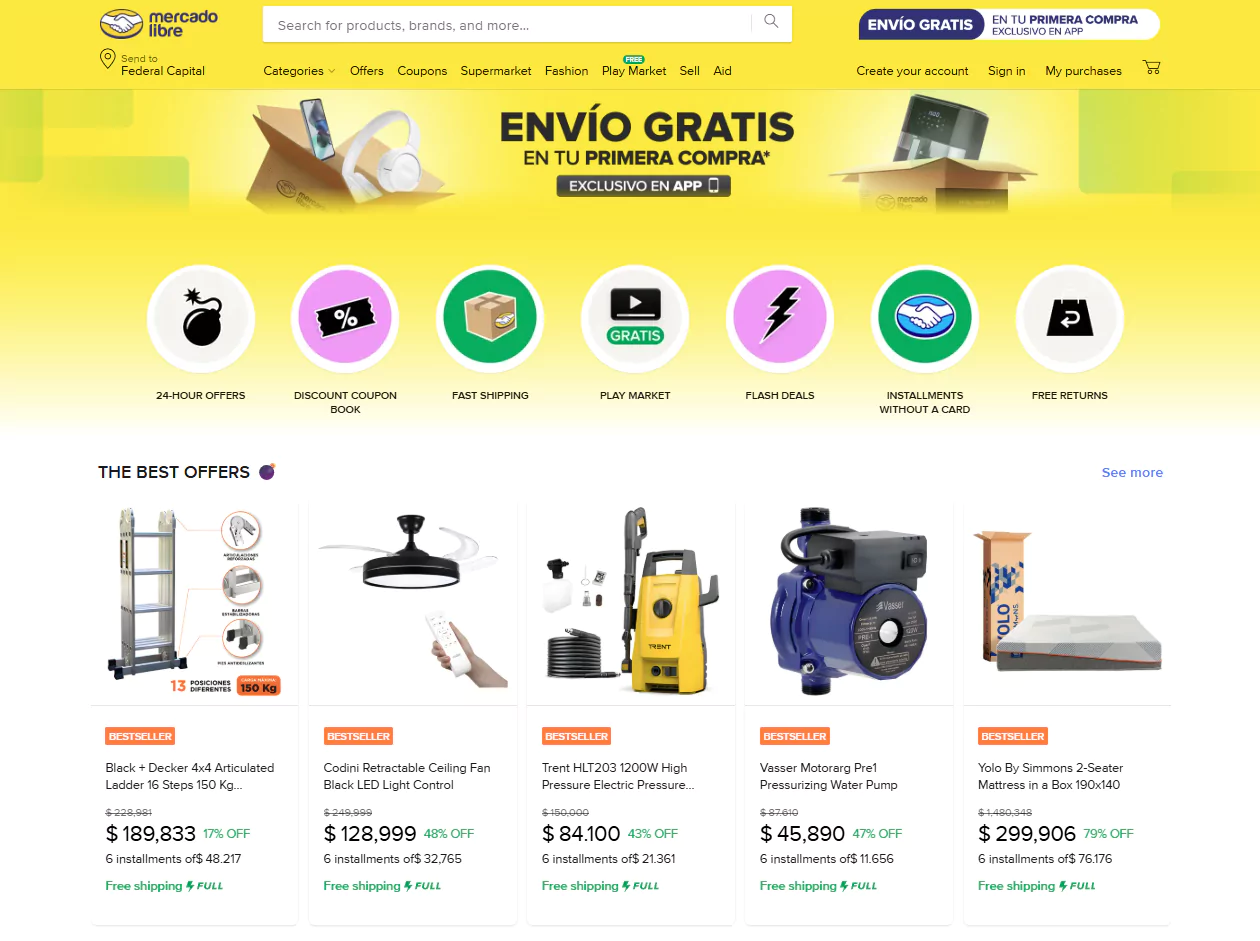
Mercado Libre is Latin America’s largest eCommerce marketplace, operating across 18 countries, including Mexico, Brazil, Argentina, Chile, and Colombia. It connects over 65 million buyers and 12 million sellers through its Global Selling platform, allowing merchants to manage listings, payments, and logistics from a single account. Its fulfillment network, Mercado Envios, handles warehousing, packing, and shipping to ensure fast delivery across the region.
Listing is free, but sellers pay a commission on completed sales, around 12.5% for Classic listings and 16.5% for Premium. Additional fees apply for shipping, long-term storage, or premium fulfillment services through Mercado Envios Full.
Zalando
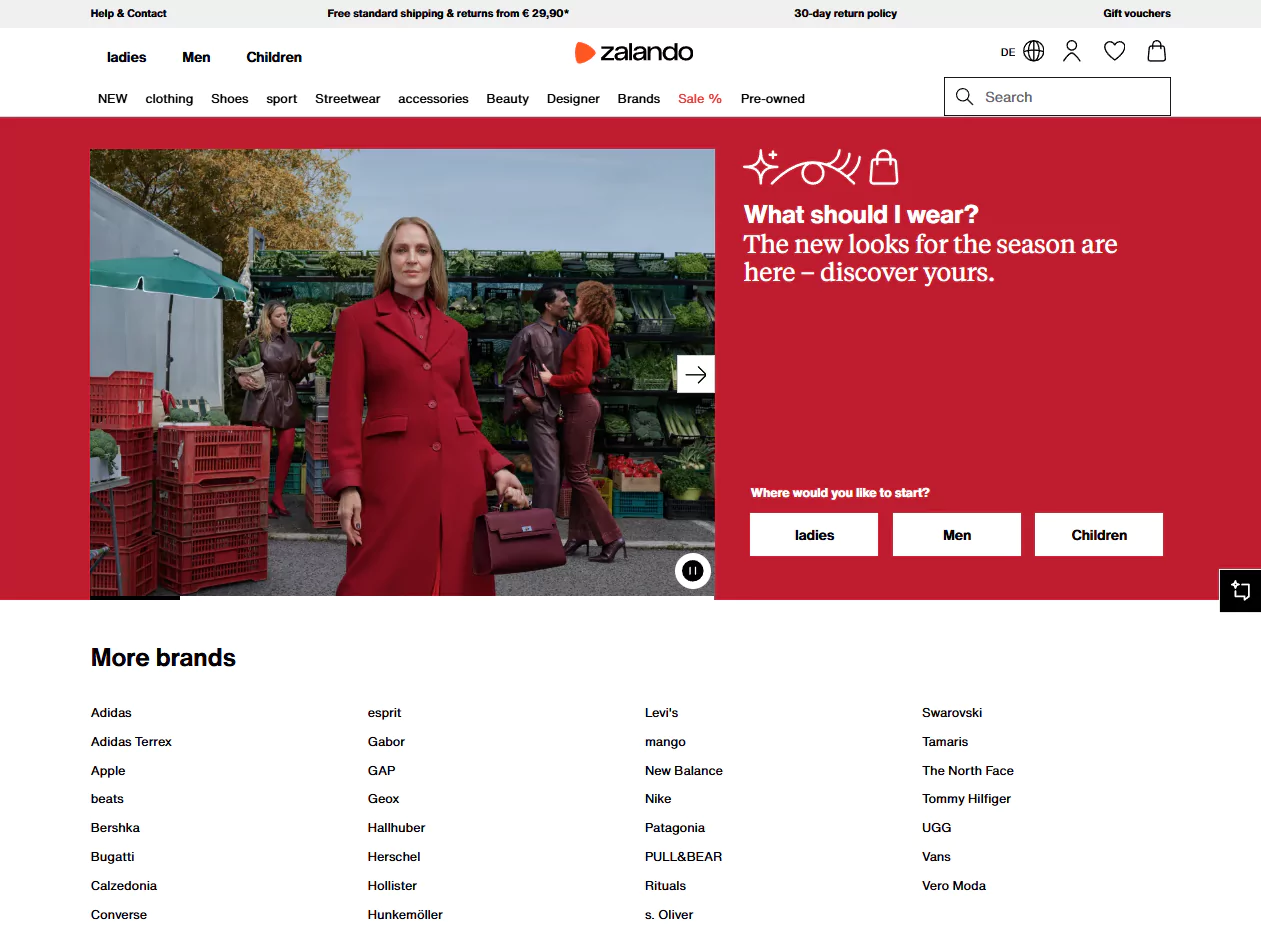
Zalando is Europe’s leading online marketplace for fashion and lifestyle products, operating in 17 countries and attracting over 35 million active users. The platform connects brands, retailers, and distributors through its Partner Program, which lets them sell directly to customers while leveraging Zalando’s logistics and marketing reach. Merchants must meet strict quality and presentation standards to ensure a consistent catalog and brand experience.
Sellers typically pay a commission per sale based on category and marketplace terms. Zalando also provides data insights, pricing tools, and marketing options to help partners boost visibility and conversions across its fashion-focused European audience.
Etsy
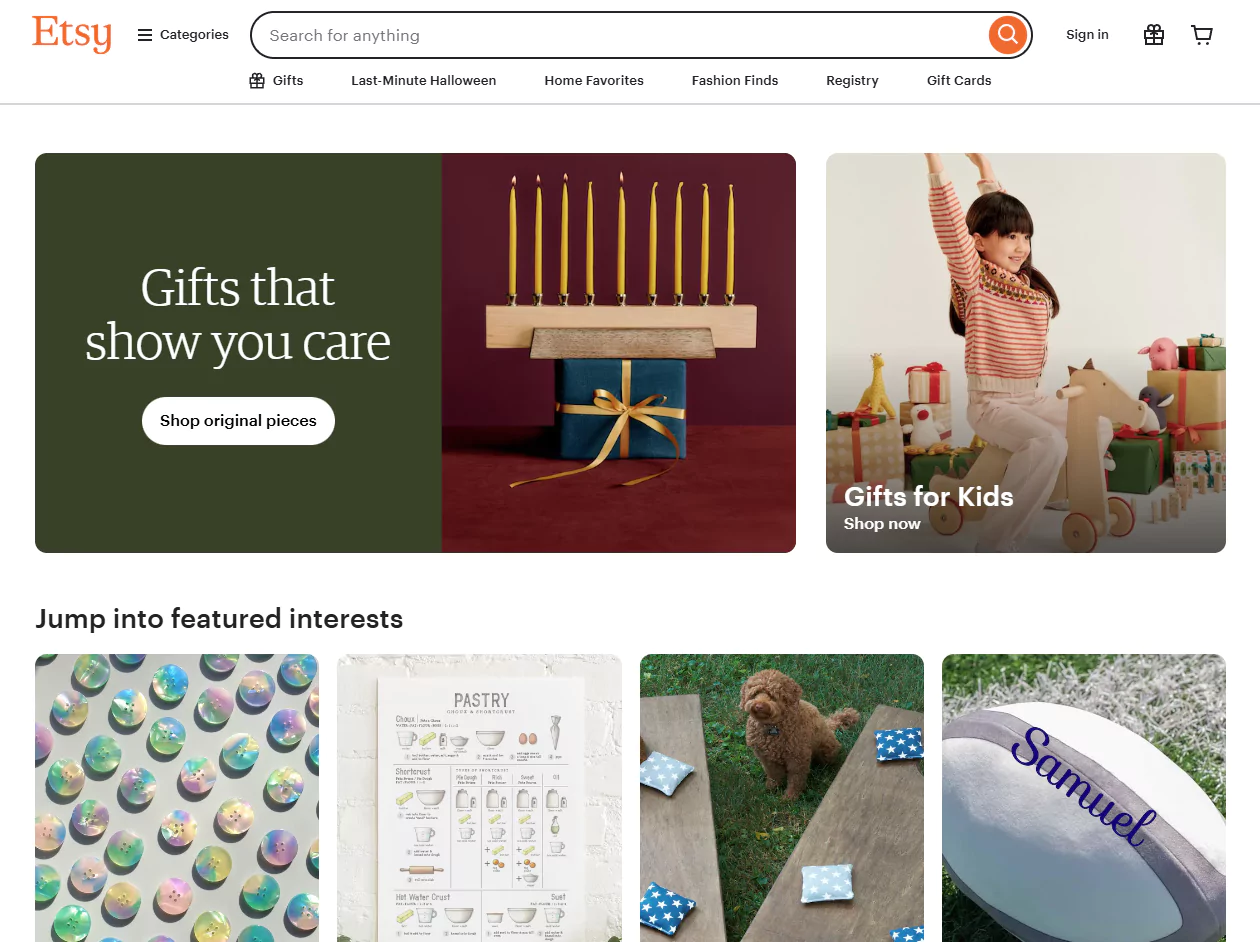
Etsy is a global marketplace for handmade, vintage, and craft-supply products, connecting creative entrepreneurs with customers who value unique and personalized goods. It supports millions of independent sellers with tools for branding, marketing, and community engagement. Sellers can list items quickly, manage orders through the Etsy Seller App, and participate in Etsy Local events or global campaigns to grow visibility.
Etsy charges a $0.20 listing fee per item, a 6.5% transaction fee, and payment processing fees that vary by country. Optional expenses include Etsy Ads, Offsite Ads, and shipping labels. Fees are deducted automatically from seller payouts.
TikTok Shop
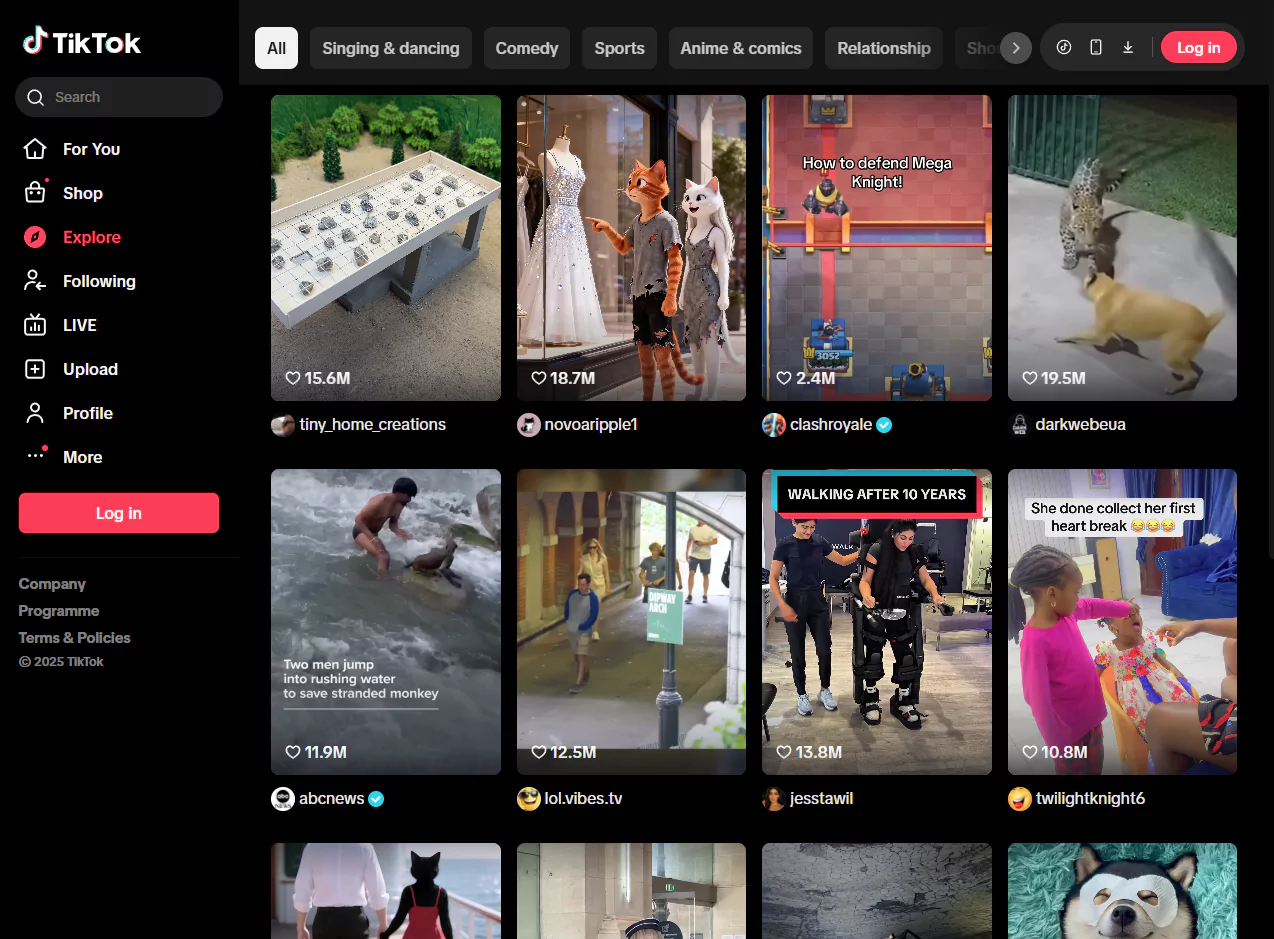
TikTok Shop combines entertainment and eCommerce, allowing brands and creators to sell products directly through shoppable videos, live streams, and an in-app Shop tab. Its algorithm-driven discovery and creator collaborations make it ideal for fast-growing brands targeting Gen Z consumers. New sellers benefit from ad credits, coupon incentives, and priority traffic through onboarding programs.
TikTok Shop has no setup fee but involves commissions, ad costs, and affiliate payouts to creators. Commissions are typically paid 15 days after delivery, and creators receive a 30-day rate lock. Sellers can boost sales using Shop Ads and influencer partnerships.
Instagram Creator Marketplace

Instagram Creator Marketplace helps brands and creators collaborate on sponsored content and partnership ads directly within the app. Available to business and creator accounts, it enables brands to discover creators using filters like interests, audience demographics, and engagement rates. Creators can build a portfolio, showcase past work, and receive partnership messages in a dedicated inbox.
There are no platform fees for joining, and payments are negotiated directly between brands and creators. Brands can also manage campaigns and track performance via Meta Business Suite, making Instagram a powerful platform for influencer-driven product promotion and social commerce.
If you already use WooCommerce, you can connect your store directly to Instagram for smooth product tagging and in-app shopping. Learn more: WooCommerce–Instagram Shopping Integration.
Once you’re ready to expand beyond a single platform, you can explore other options that support multi-vendor selling. See our breakdown of the 10 best multi-vendor eCommerce platforms to find one that fits your goals.
How Selling on Marketplaces Works
Selling on an eCommerce marketplace begins with creating a seller account and listing your products. The platform provides the structure for payments, order management, and customer support, while sellers manage inventory, pricing, and product content.
Fulfilment can be handled independently or through built-in services such as Fulfillment by Amazon (FBA), Walmart Fulfilment Services (WFS), eBay Global Shipping, Shopee Logistics, or Mercado Envios. These programs take care of warehousing, packing, and delivery, helping sellers save time and scale faster.
Once a customer places an order, the marketplace processes payment and releases it to the seller after deducting applicable fees.
Performance factors like product ratings, delivery times, and customer feedback affect visibility in search results.
Many sellers also use automation tools to sync listings and manage stock across multiple marketplaces, ensuring smooth, multichannel operations.
Advantages of Selling on eCommerce Marketplaces
Here are some of the most valuable benefits for sellers:
- Marketplaces attract millions of active buyers daily, giving sellers instant visibility without needing to build traffic from scratch.
- Established platforms offer built-in trust through secure payments and buyer protection, helping new sellers gain credibility and early sales.
- Products can be listed quickly with integrated tools for payments, shipping, and tracking, reducing setup time and complexity.
- Advertising options like sponsored listings and promotions help boost visibility, while analytics provide insights to improve performance.
- Fulfilment services such as FBA or Walmart Fulfilment manage storage, packing, and delivery, freeing sellers to focus on growth.
- Many platforms support global expansion with localization, translation, and currency conversion tools for international selling.
- Selling on marketplaces can complement your own store, adding new revenue streams and opportunities to test new markets.
Marketplaces help businesses grow faster and operate more efficiently, especially when combined with a long-term plan to build brand identity and protect profit margins.
Marketplace vs. Owning Your Own Online Store
Selling on a marketplace is quick and straightforward, while running your own online store offers more control and flexibility.
On marketplaces, sellers follow platform rules for listings, pricing, and customer communication. The platform attracts traffic and handles payments, but it also charges fees and limits how much you can customize your brand experience.
With your own store, such as one built with WooCommerce, you decide how your website looks, how you price your products, and how you engage with customers. You keep full control of your data and customer relationships, which helps build loyalty over time. However, driving traffic to your store requires marketing effort and time.
Many successful businesses combine both approaches – using marketplaces to reach wider audiences while maintaining their store as the main hub for brand identity and repeat customers.
If you’re considering building your own store instead of relying solely on marketplaces, the following guides can help you choose the right platform for your business:
- Is WooCommerce a Good Choice for e-Commerce
- What is WooCommerce: Advantages, Features, and Price
- WooCommerce vs Shopify
- WooCommerce vs Magento
Challenges & Limitations of eCommerce Marketplaces
While eCommerce marketplaces make selling easier, they also come with trade-offs. Sellers pay listing fees, commissions, and fulfilment charges that can quickly reduce profit margins. Competing on price is common, which makes it difficult to stand out or maintain steady profits. Marketplaces also limit customization, meaning sellers cannot fully control product presentation or create a unique brand experience.
Another major challenge is dependence on marketplace policies. Rule changes, algorithm updates, or account suspensions can disrupt sales overnight. Sellers also have limited access to customer data, which makes it harder to build long-term relationships or run personalized marketing campaigns. Managing inventory across multiple platforms adds more complexity, and maintaining high fulfilment standards is essential to avoid penalties or negative reviews.
Despite these challenges, marketplaces can be valuable for visibility and growth when used strategically.
How to Choose the Right eCommerce Marketplace
Choosing the right marketplace is key to reaching the right customers and keeping your business profitable. Each platform has its own audience, fees, and strengths, so it’s important to find the best fit for your products and goals.
- Choose marketplaces where your target customers already shop. For example, Etsy suits handmade or creative goods, while Amazon works better for mass-market products.
- Look at how similar products perform and how competitive the space is. Pick platforms with steady demand but manageable competition.
- Review listing fees, commissions, and fulfilment costs to ensure the platform is profitable for your business.
- Choose marketplaces that connect smoothly with WooCommerce or your ecommerce system to sync listings and inventory automatically.
- Decide if you’ll handle shipping or use marketplace services such as Fulfilled by Amazon or Walmart Fulfillment Services.
- Start with one or two marketplaces that align with your goals, then expand once you’ve built experience and brand visibility.
- Also consider who you’re selling to (business clients or end consumers) since platform choices differ for each. Learn more about B2B vs. B2C eCommerce.
The right marketplace should balance visibility, profit potential, and ease of management while supporting your brand’s long-term growth.
Conclusion
eCommerce marketplaces have become an essential part of the online selling landscape. They give businesses instant access to large audiences, trusted payment systems, and ready-to-use infrastructure. For many sellers, they are the fastest way to grow visibility and test new markets without building a full online store.
At the same time, marketplaces come with limits such as fees, competition, and less control over branding. The best strategy is often a mix of both – using marketplaces for reach and your own store for long-term brand growth.
If you use WooCommerce, you can connect your store to leading marketplaces and manage listings, orders, and inventory from one dashboard. This approach helps you sell smarter, save time, and build a sustainable multichannel business. As your business grows, building a strong independent website can help strengthen your brand identity and customer trust. Take inspiration from these small business website examples to see how others have created professional, conversion-focused online stores.




